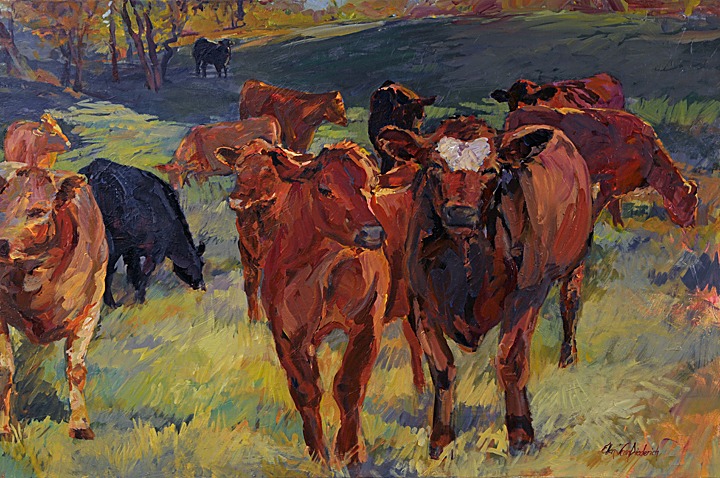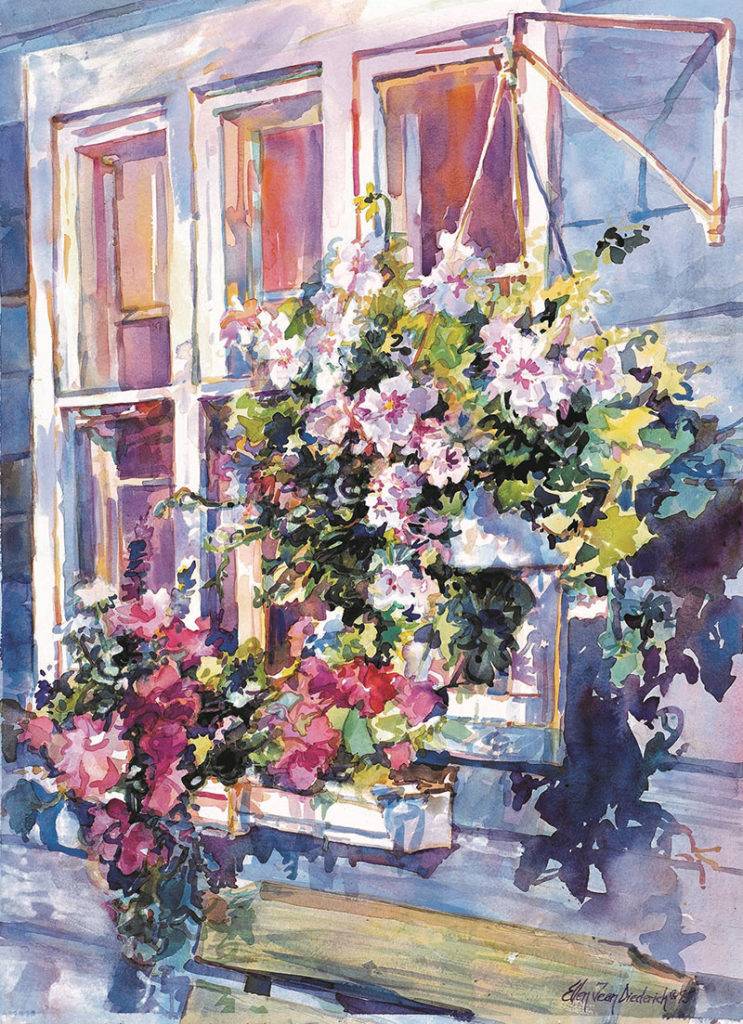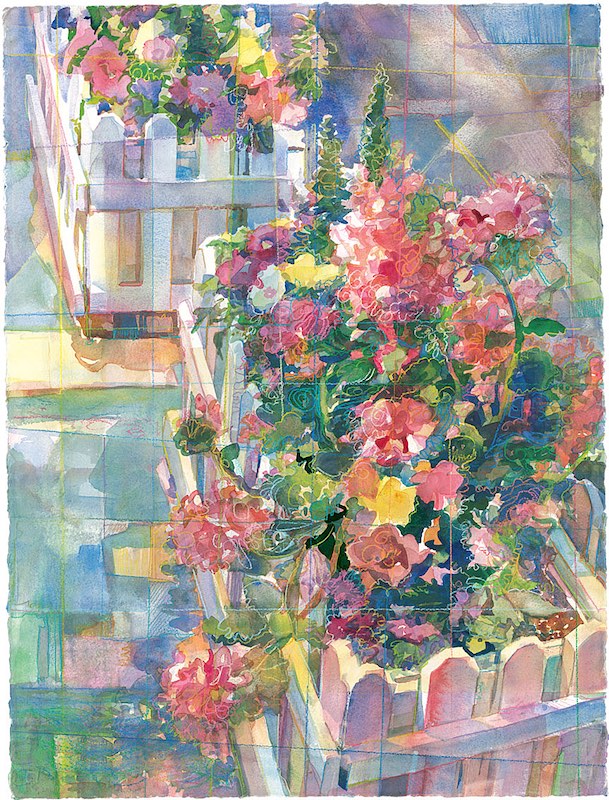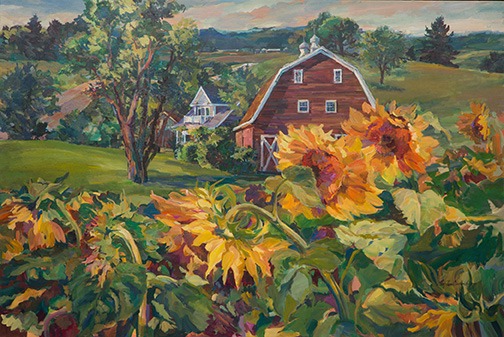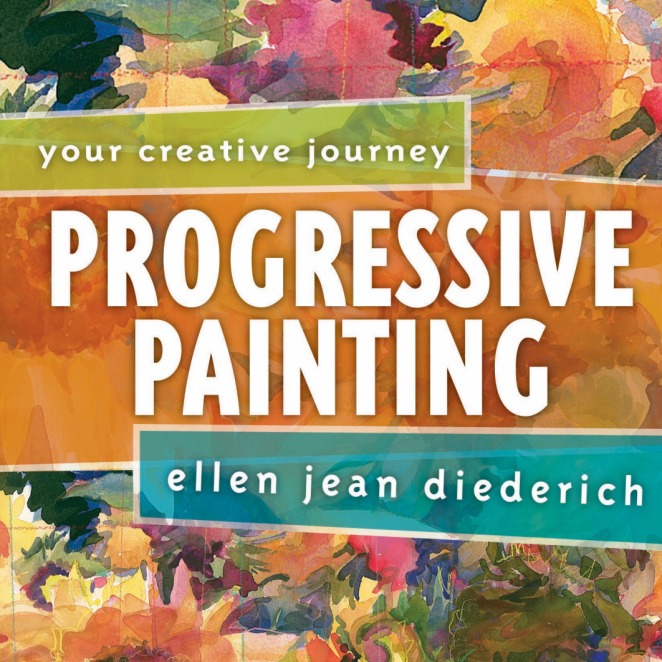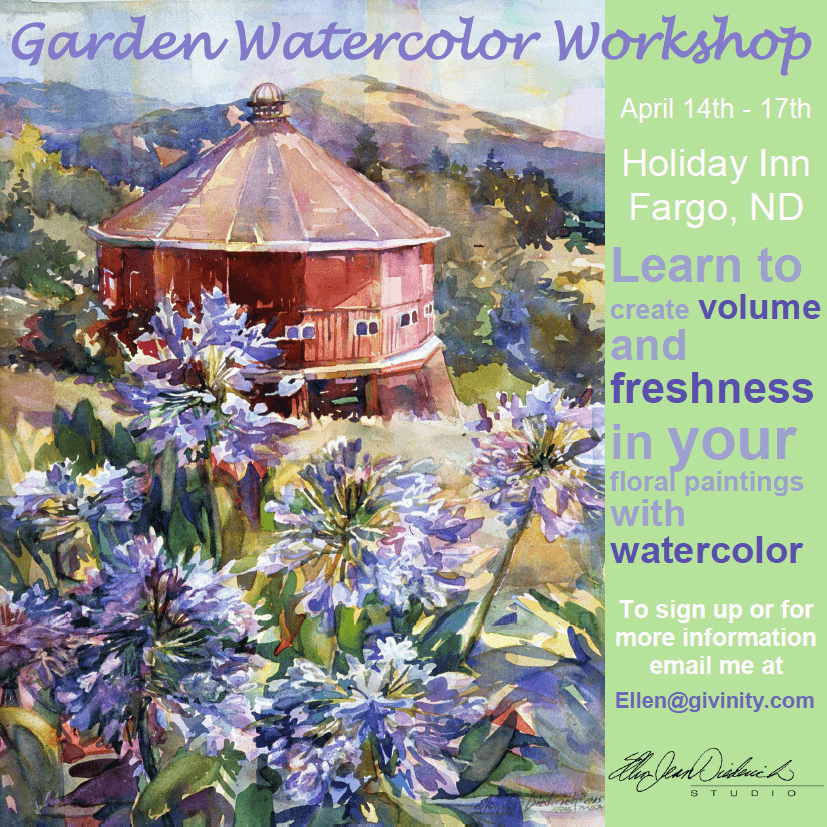When I first started painting on my own I could only get one good painting out of ten. This changed to one good painting out of five when I became disciplined about planning and sketching. Today it’s even better.
It took me a whole year of disciplining myself to plan every single painting before it got easier to move compositions around. Often we are tempted to just sit down and paint. Short on time? Break up the time: gather, sketch ideas, warm up, draw pieces out, and prepare painting surfaces. Pat yourself on the back every time you do this. You will have a rested energy and will be read to paint well when you make the effort to prepare.
To communicate effectively, you must attract attention to the main focus of your piece. This is done with your interest area (center of interest). It doesn’t have to be “a thing” but could be a particular grouping of shapes. Planning your composition (the arrangement of shapes in space) around the interest area is a good starting point from which to build your design.
Use a sketchbook for planning compositions. Draw out the interest area and then build the relationship between it and other shapes by overlapping, interlocking, separating, or pointing to it. Related shapes create unity. Repeating a subject will create related shapes. Repeating the same subject throughout the picture plane will naturally keep your shapes related.

Other Side of the Fence 24″x36″
When composing, I like to draw on a smaller scale so the grouping of the shapes doesn’t fill up the whole page. Begin by organizing the relationship between shapes. When planning out my painting “The Other Side of the Fence”, I referred to several photos I had taken of these particular cows. I drew sketches to organize the subject, drawing out key shapes for the most compelling composition. By dramatizing the lighting to contrast the foreground from the background, further depth was added to the overall piece. Often times photograph references contain interesting subject matter, but poor composition. Use your sketchbook to organize the essence of the relationships between shapes.

